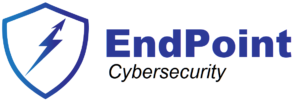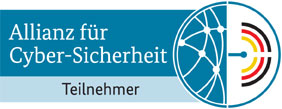Maping NIS2 requirements to the ISO 27001:2022 framework
We described here the process needed to perform a gap analysis for NIS2, but we did not add the details on how to approach this.
This article references on the ISO27001:2022 series, especially on the description of the Annex A controls. Make sure you are familiar with the ISO 27oo1:2022 requirements and the with the Annex A.
Introduction
The NIS2 Directive, aimed at strengthening network and information system security across the European Union, necessitates a thorough alignment with the latest iteration of the ISO 27001 standard, which was updated in 2022. This article explores a comprehensive methodology for conducting a gap analysis to ensure compliance with NIS2 using the framework provided by ISO 27001:2022.
Understand NIS2 Requirements
The NIS2 Directive expands upon its predecessor by setting stringent cybersecurity and resilience measures for essential and important entities across various sectors. Its key focus areas include incident response, supply chain security, and the security of network and information systems. These areas are critical in maintaining the integrity and availability of services that are vital to the internal market and public welfare.
The NIS2 Directive does not prescribe a specific set of controls for the affected companies.
Rather, it states that they should adopt measures that are appropriate to their specific risk profile, considering factors such as:
-
The state of the art in cybersecurity
-
The potential impact of incidents on their services
-
The costs of implementing the measures
-
The proportionality between the measures and the risks
-
The NIST Cybersecurity Framework
-
The ENISA Good Practices for Security of Internet of Things
-
The ETSI Technical Specification on Critical Security Controls for Effective Cyber Defense
Read here our collection of articles about the NIS2 directive.
Overview of ISO 27001:2022
ISO 27001:2022 establishes requirements for an Information Security Management System (ISMS), providing a systematic approach to managing sensitive company information so that it remains secure.
It includes people, processes, and IT systems by applying a risk management process and clearly defines information security control requirements in its Annex A .
Similarities
Despite the differences in scope, objectives, requirements and controls, there are some similarities between the NIS2 Directive and the ISO 27001:2022 standard.
Here are the most evident similarities :
-
Risk management: Both frameworks are based on the concept of risk management, which involves identifying, analyzing, evaluating, and treating the information security risks that affect the organization or the service.
-
Involvement and commitment of top management: Both frameworks require the involvement and commitment of top management, who are responsible for ensuring that the appropriate resources, roles and responsibilities are allocated to support the implementation and maintenance of the measures.
-
Importance of continuous improvement: Both frameworks emphasize the importance of continuous improvement, which involves monitoring, measuring, reviewing, and updating the measures to ensure they remain effective and relevant in a changing environment.
-
Cooperation and information sharing: Both frameworks encourage cooperation and information sharing among relevant stakeholders, such as authorities, regulators, customers, suppliers, and peers, to enhance the overall level of cybersecurity.
Mapping NIS2 to ISO27001:2022 requirements
The mapping begins with identifying the specific NIS2 requirements that are applicable to the organization.
Step 1: Identify NIS2 requirements
1. Scope of Application
- Expansion of Affected Entities: NIS2 extends its requirements beyond the sectors covered by the original NIS Directive, including essential and important entities across various sectors such as energy, transport, health, and digital services.
2. Risk Management Measures
- Comprehensive Security Requirements: Entities are required to implement appropriate technical and organizational measures to manage the risks posed to the security of network and information systems, including measures for incident handling, business continuity, and supply chain security.
3. Incident Response and Reporting
- Incident Reporting Obligations: NIS2 mandates strict incident reporting requirements, where entities must notify relevant national authorities about significant cybersecurity incidents with potentially severe operational impacts, within a short timeframe.
4. Supply Chain Security
- Security of Supply Chains and Supplier Relationships: Entities need to address cybersecurity risks not only within their own operations but also across their supply chains, ensuring that suppliers meet security requirements to protect against potential vulnerabilities and threats.
5. Interoperability and Cooperation
- Enhanced Cooperation Among States: NIS2 emphasizes improved information sharing and coordinated response among EU member states, with mechanisms for cross-border collaboration in cybersecurity threat detection, response, and recovery.
6. Security and Network Systems
- Strengthening of Security Practices: Detailed requirements on securing network and information systems, ensuring the integrity, availability, and confidentiality of services, particularly in critical infrastructure sectors.
7. Regulatory Oversight and Compliance
- Increased Enforcement Powers: Regulatory authorities are granted more significant powers to enforce the Directive, including the ability to conduct audits, review compliance, and impose sanctions on entities failing to meet the cybersecurity requirements.
8. Financial Penalties
- Penalties for Non-Compliance: NIS2 introduces substantial financial penalties for non-compliance, aimed at ensuring that entities take their cybersecurity obligations seriously.
9. Cybersecurity Measures Specificity
- Detailed Guidelines and Standards: The Directive encourages the use of established standards and specifications to fulfill the required security measures, promoting best practices in cybersecurity management.
This step involves a detailed review of NIS2, focusing on the obligations that directly impact the organizational processes and security measures.
Step 2: Map requirements to the ISO 27001:2022 chapters
The next step is to map relevant chapters and controls in ISO 27001:2022 to these NIS2 requirements:
- Chapter 4 (Context of the Organization) -> NIS2 1,4,5
- Understand external and internal issues that affect the ISMS, aligning with NIS2’s broader security requirements.
- Identify if the company is falling into the two entity categories: Important and Essential.
- An important step is also to identify and assess all external suppliers.
- Chapter 5 (Leadership) -> NIS2 1,5,8
- Ensures management’s commitment to the ISMS, mirroring NIS2’s emphasis on leadership and governance in cybersecurity.
- Chapter 6 (Planning) -> NIS2 2,3,4,6
- Address the assessment and treatment of information security risks, a core component of proactive compliance under NIS2.
- Conduct a risk assessment to identify threats, vulnerabilities, and impacts on information assets.
- Develop a risk treatment plans to address identified risks, including mitigation, transfer, or acceptance.
- Chapter 7 (Support) -> 5,7,9
- Provide the framework for managing resources and operational planning,
- Establish communication channels for reporting security incidents and seeking guidance on information security matters.
- Chapter 8 (Operation) -> NIS2 2,3,4,6
- Provide the framework for managing resources and operational planning, establishes incident response and business continuity plans to mitigate the impact of security incidents and disruptions, crucial for implementing the technical and organizational measures required by NIS2.
- Chapter 9 (Performance Evaluation) -> NIS2 8,9
- Assess the performance of the ISMS, helping to ensure continuous improvement in line with NIS2’s dynamic compliance landscape.
Disclaimer:
This mapping is author’s own interpretation based on his personal opinion and understanding of the requirements. It is not the only possible interpretation and it is most probably not the best one available.
Conclusion
By mapping NIS2 requirements to the structured framework provided by ISO 27001:2022, organizations can not only ensure compliance but also strengthen their overall security posture.
It is important to understand that this alignment is not a one-time effort but a continuous process of adaptation and improvement, reflecting the dynamic nature of cybersecurity threats and regulatory requirements.
As such, organizations should focus on regular reviews and updates to their ISMS, ensuring that it remains robust, responsive, and compliant.
The post Maping NIS2 requirements to the ISO 27001:2022 framework first appeared on Sorin Mustaca on Cybersecurity.



